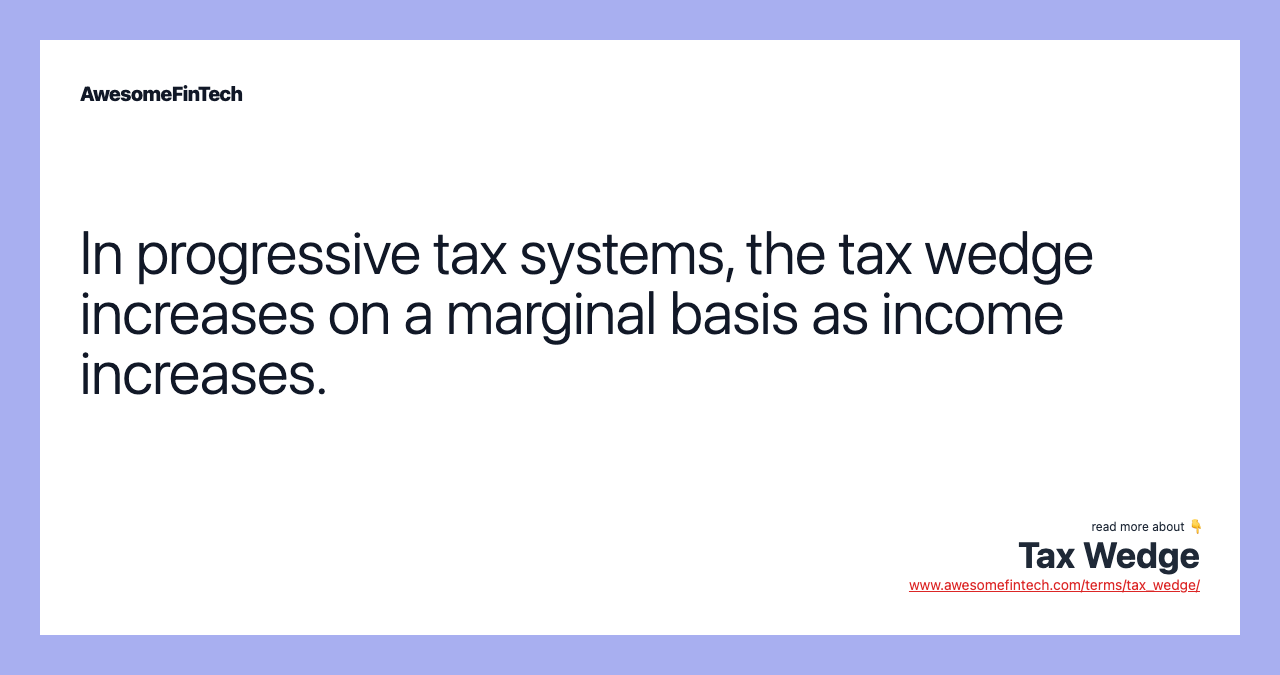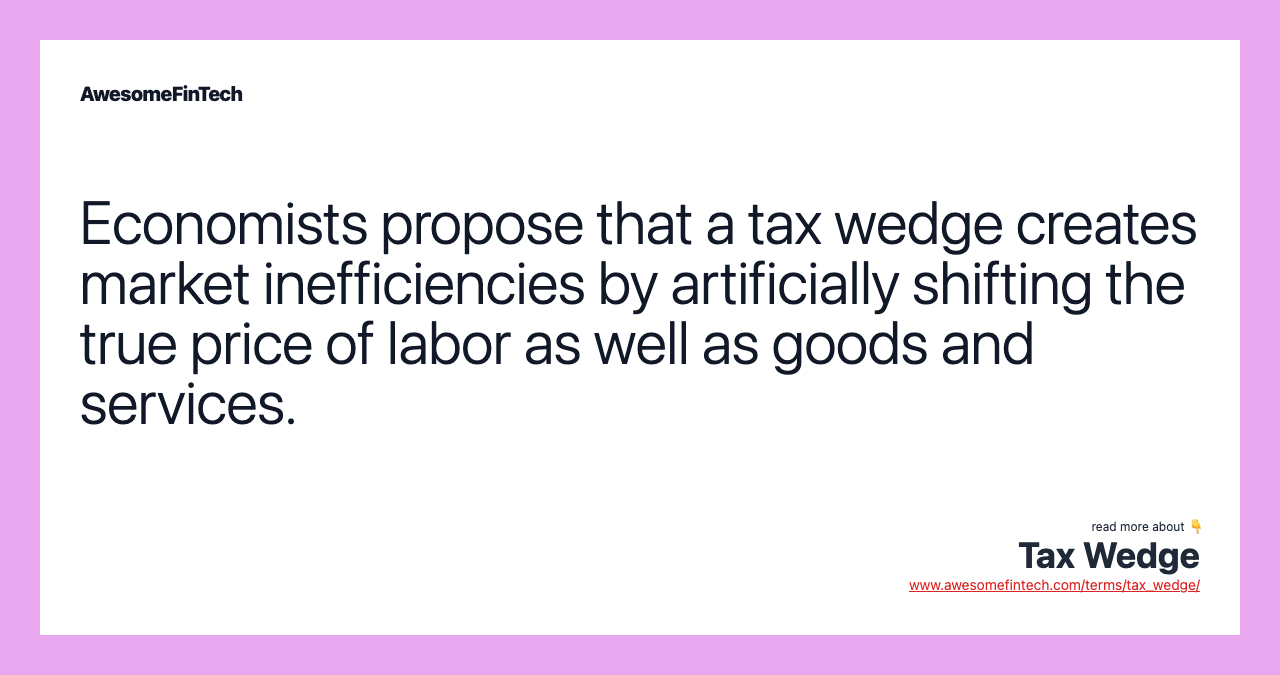Tax Wedge
A tax wedge is the difference between before-tax and after-tax wages. The market inefficiency that results from a tax wedge will cause the consumer to pay more and the producer to receive less for the good than they did before the tax, due to higher equilibrium prices paid by consumers and lower equilibrium quantities sold by producers. The tax wedge is the difference between what employees take home in earnings and what it costs to employ them (labor cost), or the dollar measure of the income tax rate. A tax wedge is the difference between before-tax and after-tax wages. In progressive tax systems, the tax wedge increases on a marginal basis as income increases.

What Is a Tax Wedge?
A tax wedge is the difference between before-tax and after-tax wages. The tax wedge measures how much the government ostensibly receives as a result of taxing the labor force.
Tax wedge may also refer to the market inefficiency that is created when a tax is imposed on a good or service. The tax causes the supply and demand equilibrium to shift, creating a wedge of dead weight losses.



Understanding the Tax Wedge
Many employees have taxes withheld from their paychecks, which means their take home pay is less than the gross salary or wage or the cost of employing them. The tax wedge is the difference between what employees take home in earnings and what it costs to employ them (labor cost), or the dollar measure of the income tax rate. The Organization for Economic Co-operation and Development (OECD) defines a tax wedge as the ratio between the amount of taxes paid by an average single worker (a single person at 100% of average earnings) without children and the corresponding total labour cost for the employer. Some argue that the tax wedge on investment income will also reduce savings, and ultimately lower living standards.
The decrease in net income may lead to employees making a decision not to work as much or to find other ways to keep more of the income (by using government benefits, for example). While applications for government benefits rise, the workforce suffers as the employees who remain demand higher salaries, causing employers to decrease their hiring rate.
Example of the Tax Wedge
In some countries, the tax wedge increases as employee income increases. This reduces the marginal benefit of working; therefore, employees will often work less hours than they would if no tax was imposed. Thus, a tax wedge might be calculated to determine how higher payroll taxes ultimately affect hiring.
For example, assume an employee’s gross income is $75,000 and he falls in the 15% and 5% tax brackets for federal and state income tax, respectively. His net income will be $75,000 x 0.80 = $60,000. In a progressive tax system, at some point, income taxes are increased at both federal and state levels to 25% and 8%, respectively. Tax withheld from gross income is now $24,750, and net income is $75,000 - $24,750 (or $75,000 multiplied by 0.67) = $50,250.
Tax Wedge and Market Inefficiency
A tax wedge can also be used to calculate the percentage of market inefficiency introduced by sales taxes. When a good or service is taxed, the equilibrium price and quantity shifts. The resulting price or quantity which deviates from the equilibrium is known as the tax wedge. The market inefficiency that results from a tax wedge will cause the consumer to pay more and the producer to receive less for the good than they did before the tax, due to higher equilibrium prices paid by consumers and lower equilibrium quantities sold by producers. In effect, the sales tax effectively drives a "wedge" between the price consumers pay and the price producers receive for a product.
Related terms:
Cost of Labor
The cost of labor is the total of all employee wages plus the cost of benefits and payroll taxes paid by an employer. read more
Equilibrium
Equilibrium is a state in which market supply and demand balance each other, and as a result, prices become stable. read more
Federal Income Tax
In the U.S., the federal income tax is the tax levied by the IRS on the annual earnings of individuals, corporations, trusts, and other legal entities. read more
Gross Income : Formula & Examples
Gross income represents the total income from all sources, including returns, discounts, and allowances, before deducting any expenses or taxes. read more
Income
Income is money received in return for working, providing a product or service, or investing capital. A pension or a gift is also income. read more
Independent Contractor
An independent contractor is a person or entity engaged in a work performance agreement with another entity as a non-employee. read more
Inefficient Market
An inefficient market, according to economic theory, is one where prices do not reflect all information available. read more
Investment Income
Investment income is money derived from interest payments, dividends, or capital gains realized on the sale of stock or other assets. read more
Net Income (NI)
Net income, also called net earnings, is sales minus cost of goods sold, general expenses, taxes, and interest. read more
Organisation for Economic Co-operation and Development (OECD)
The Organisation for Economic Co-operation and Development (OECD) is a group of 37 member countries that discuss and develop economic and social policy. read more